Cultural Festivals in India, with many different cultures and traditions, comes to life through its colorful festivals. Each festival is not only a celebration but also shows India’s rich history, artistic spirit, and community togetherness. From North to South, East to West, India’s cultural festivals are a beautiful mix of colors, rituals, music, and dance. For travelers who want a real experience, here are 10 of the best cultural festivals in India you shouldn’t miss.
- 1. Diwali (The Festival of Lights)
- 2. Holi (The Festival of Colors)
- 3. Eid-ul-Fitr (Festival of Breaking the Fast)
- 4. Durga Puja (The Celebration of Goddess Durga)
- 5. Ganesh Chaturthi (The Festival of Lord Ganesha)
- 6. Navratri (Nine Nights of Dance and Worship)
- 7. Pongal (Harvest Festival of Tamil Nadu)
- 8. Onam (Harvest Festival of Kerala)
- 9. Pushkar Camel Fair (Cultural & Livestock Fair)
- 10. Baisakhi (Harvest Festival of Punjab)
- FAQs
1. Diwali (The Festival of Lights)
- When: October to November
- Where: All over India
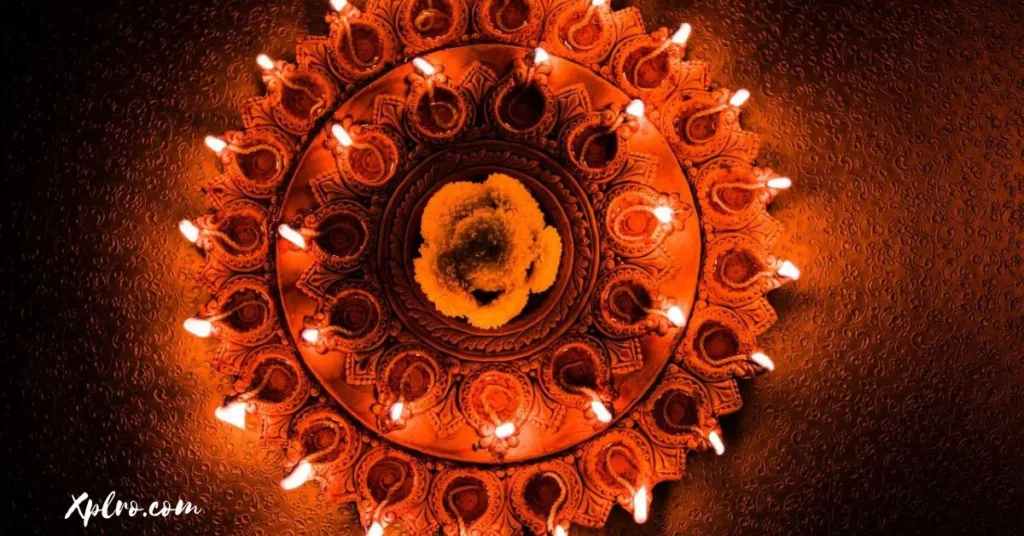
Diwali, the “Festival of Lights,” is celebrated with great joy all over India. People light up their homes and streets with oil lamps called diyas, and they set off fireworks to show the victory of light over darkness. Based on Hindu stories, Diwali is a symbol of Lord Rama returning to his kingdom after defeating the evil king Ravana. The festival also includes Lakshmi Puja, where people pray to the goddess of wealth and prosperity.
Cultural Festivals in India Highlights:
- Homes decorated with lights and colorful designs.
- Special food, sweets, and fireworks.
- The religious rituals of Lakshmi Puja.
Tips: Visit Varanasi for a spiritual Diwali, where the Ganga Aarti and floating diyas on the Ganges River offer a mesmerizing experience.
2. Holi (The Festival of Colors)
- When: March
- Where: All over India, especially North India
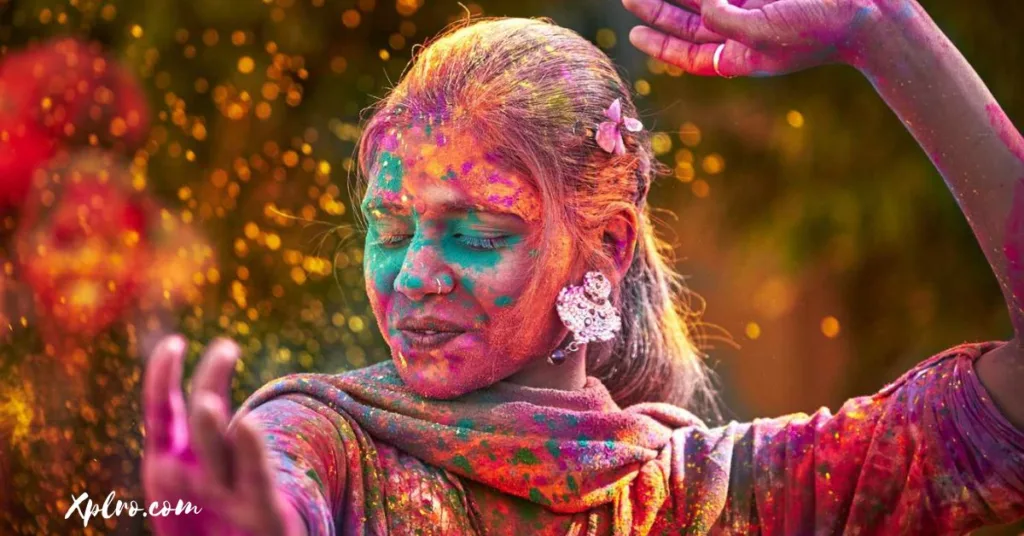
Holi is one of India’s most colorful festivals. It is a symbol of spring coming and good winning over evil. People celebrate by throwing colorful powders and water. It is a day of laughter, music, dance, and togetherness. Holi comes from Hindu stories, remembering when Lord Vishnu defeated the evil Holika.
Cultural Festivals in India Highlights:
- Throwing gulal (colored powder) in streets and public spaces.
- Bonfires on the eve of Holi (Holika Dahan) to show the destruction of evil.
- Traditional sweets like gujiyas and drinks like thandai.
Tips: Visit Mathura and Vrindavan in Uttar Pradesh for traditional and vibrant Holi celebrations.
3. Eid-ul-Fitr (Festival of Breaking the Fast)
- When: Changes based on the Islamic lunar calendar (after Ramadan)
- Where: All over India, especially in cities like Delhi, Hyderabad, and Lucknow
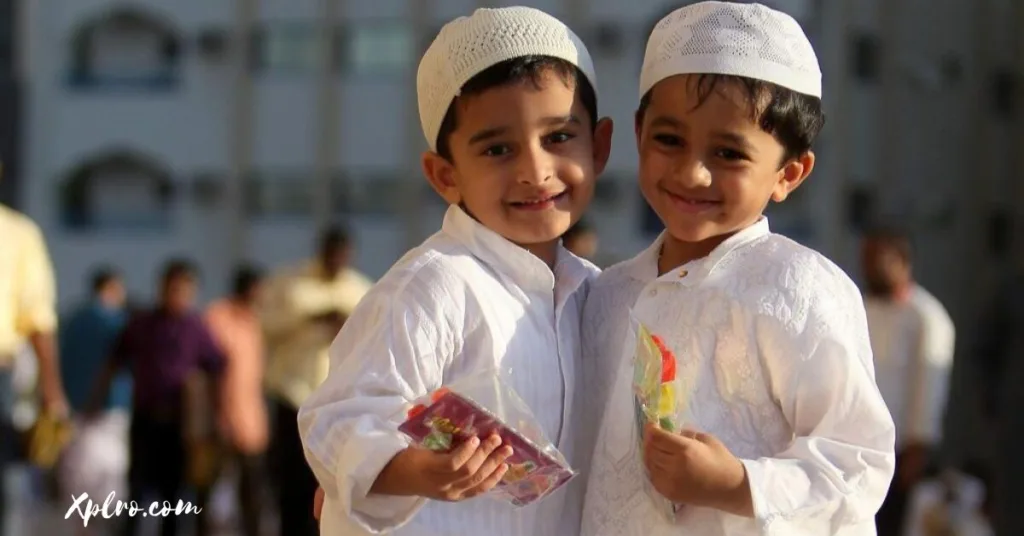
Eid-ul-Fitr is when Muslims end Ramadan, the holy month of fasting. It is a festival of happiness, thanks, and togetherness. People stop fasting and offer special prayers (Salat al-Eid) at mosques. Delicious meals, new clothes, and giving to charity (Zakat) are important parts of the celebration. The festival shows India’s diverse culture, as people from different communities join in the festivities.
Cultural Festivals in India Highlights:
- Morning prayers at local mosques, followed by festive greetings of “Eid Mubarak”.
- Special meals, especially biryani, sheer khurma (a sweet dish), and seviyan (vermicelli pudding).
- Giving of Zakat (charity) and exchanging gifts.
Tips: Experience Eid in Old Delhi, particularly at the Jama Masjid, to witness the grandeur of the celebrations and enjoy the authentic Eid delicacies at nearby food stalls.
4. Durga Puja (The Celebration of Goddess Durga)
- When: September to October
- Where: Mostly in West Bengal, especially Kolkata
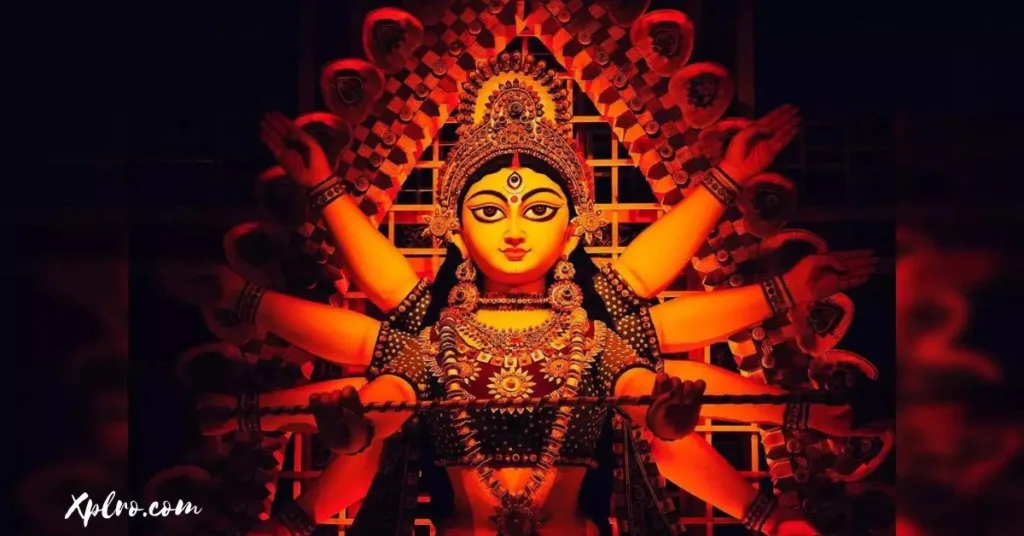
Durga Puja is a big celebration of the goddess Durga winning over the buffalo demon Mahishasura. Kolkata becomes a cultural center during this festival. Large, beautiful idols of Goddess Durga are shown in pandals (temporary structures). The city’s streets come alive with colorful processions, music, traditional dances, and feasting.
Cultural Festivals in India Highlights:
- Visiting pandals to admire art installations and Durga idols.
- Traditional Bengali food and sweets like rosogolla.
- Rituals like Aarti and the immersion of idols in rivers.
Tips: Explore Kolkata during Durga Puja to experience the artistic and spiritual grandeur of the festival.
5. Ganesh Chaturthi (The Festival of Lord Ganesha)
- When: August to September
- Where: Maharashtra, especially Mumbai
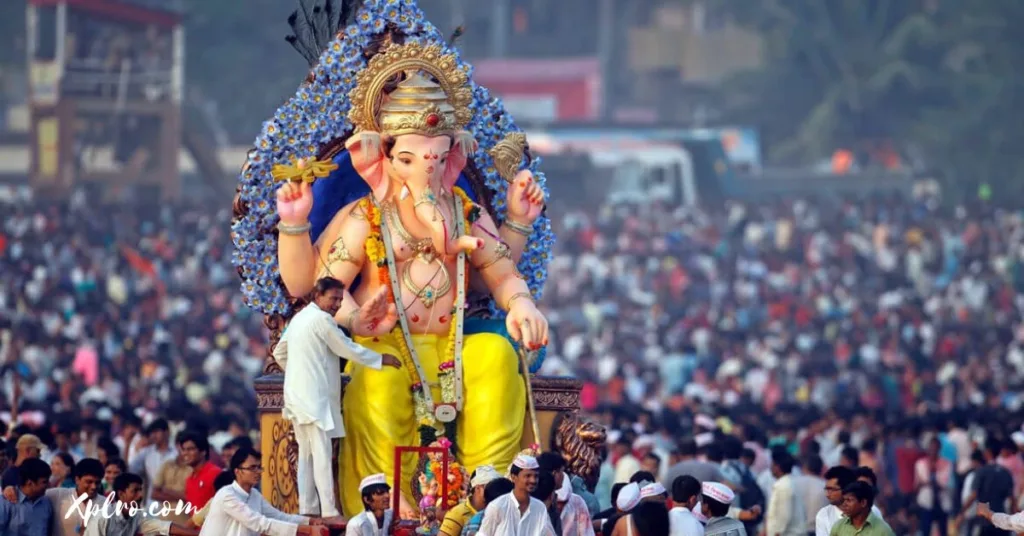
Ganesh Chaturthi celebrates the birth of Lord Ganesha, the one who removes obstacles. The festival lasts for 10 days, where beautiful idols of Ganesha are placed in homes and public pandals. The celebration ends with the immersion of these idols in water bodies, a big procession with chants, music, and dancing.
Cultural Festivals in India Highlights:
- Public Ganesh pandals displaying massive idols.
- Immersion processions with chants of “Ganpati Bappa Morya.”
- Devotees offering modaks, Ganesha’s favorite sweet.
Tips: Witness the biggest processions and immersions in Mumbai, particularly at Chowpatty Beach.
6. Navratri (Nine Nights of Dance and Worship)
- When: September to October
- Where: Mostly Gujarat and Maharashtra
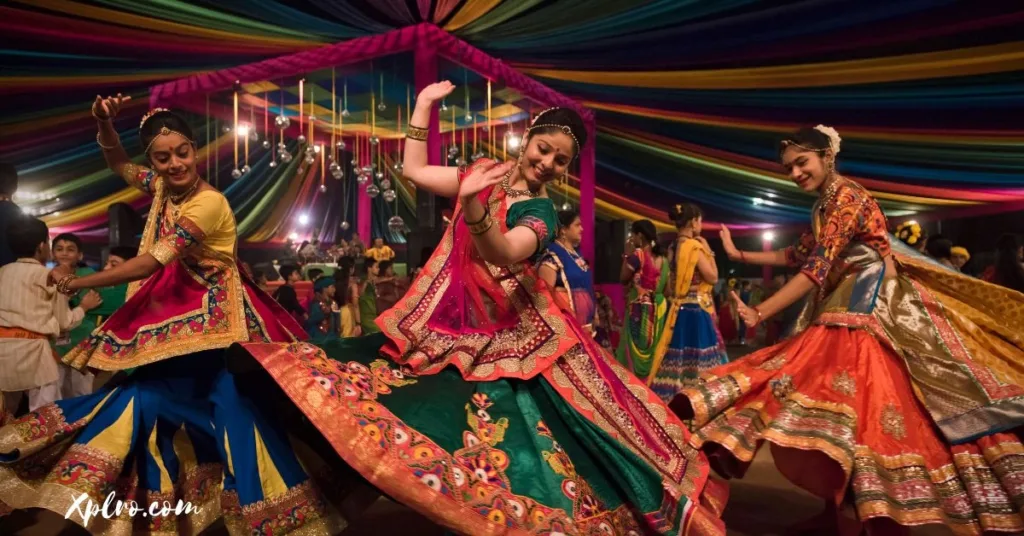
Navratri is a nine-day festival dedicated to Goddess Durga. It is celebrated with traditional dances like Garba and Dandiya in Gujarat and Maharashtra. Devotees fast, pray, and do rituals to honor the divine feminine. The nights are filled with colorful dances, music, and community celebrations.
Cultural Festivals in India Highlights:
- Traditional Garba and Dandiya dances.
- Bright, colorful costumes and folk music.
- Fasting and special pujas dedicated to the goddess.
Tips: Head to Ahmedabad for the largest Navratri celebrations, where thousands gather to dance in Garba circles each night.
7. Pongal (Harvest Festival of Tamil Nadu)
- When: January
- Where: Tamil Nadu
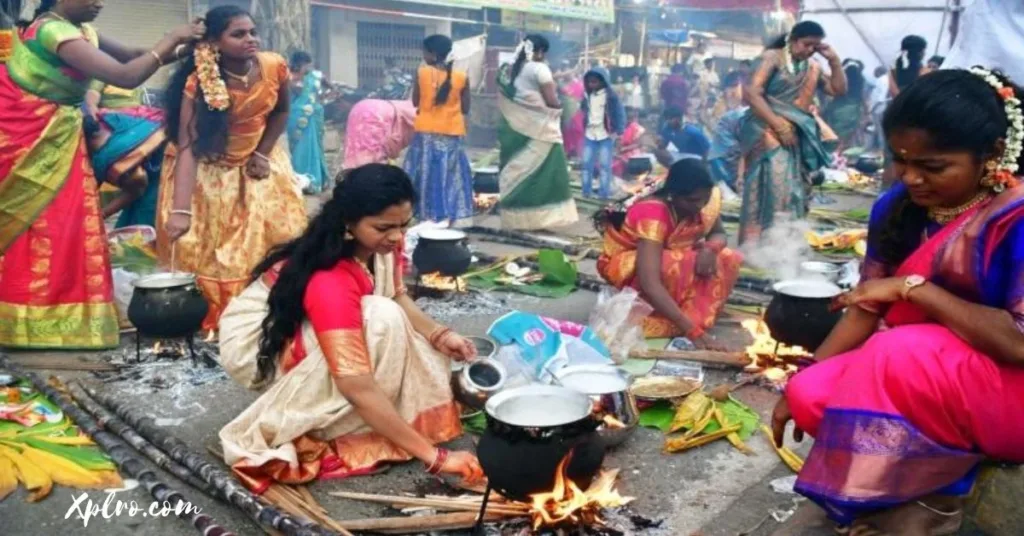
Pongal is Tamil Nadu’s harvest festival, thanking the sun god for a good harvest. The four-day celebration includes making a special dish called Pongal, made from freshly harvested rice, and honoring cows for their help in farming. Homes are decorated with kolam (rangoli designs), and the festival marks the start of the Tamil new year.
Cultural Festivals in India Highlights:
- Cooking and sharing Pongal, a sweet rice dish.
- Rituals to honor cows and bull-taming contests in villages.
- Traditional Tamil music, dance, and community feasts.
Visit Madurai or Thanjavur to witness traditional Pongal celebrations.
8. Onam (Harvest Festival of Kerala)
- When: August to September
- Where: Kerala
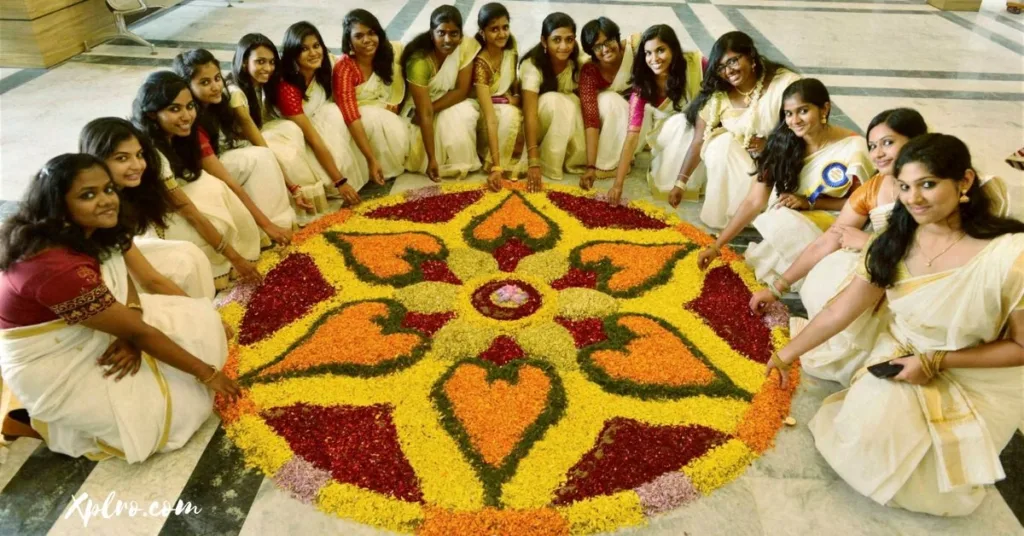
Onam is the biggest cultural festival in Kerala, celebrating the return of King Mahabali. The festival lasts for 10 days and features big feasts, flower carpets (pookalam), traditional dance performances, and boat races. It’s a time when Kerala shows its cultural richness through elaborate rituals and community celebrations.
Cultural Festivals in India Highlights:
- The traditional Onam Sadya (feast) served on banana leaves.
- Pookalam (floral rangolis) adorning homes.
- Snake boat races and folk dances like Kathakali.
Tips: Experience the snake boat races in Alleppey, or attend the festivities in Kochi for a blend of traditional and modern celebrations.
9. Pushkar Camel Fair (Cultural & Livestock Fair)
- When: November
- Where: Pushkar, Rajasthan
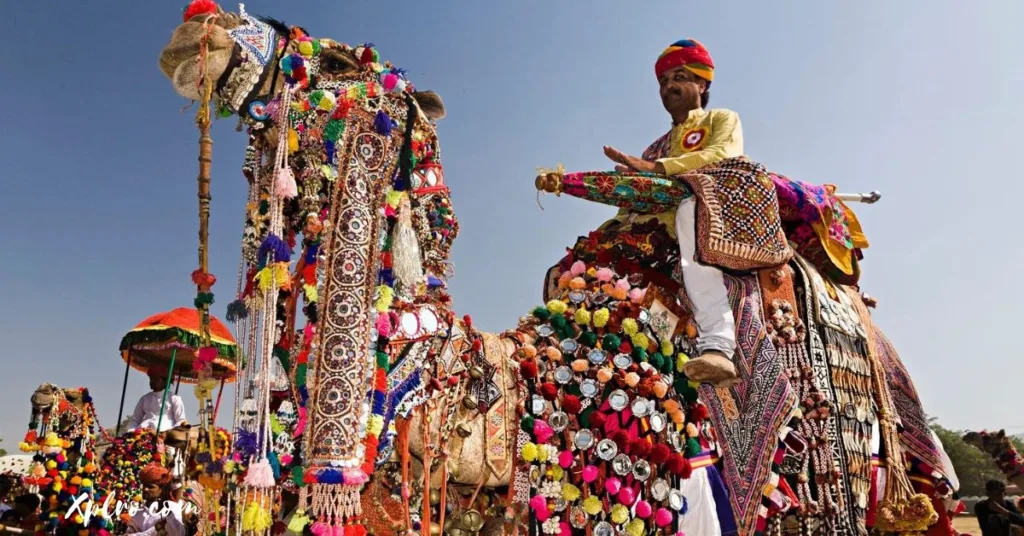
The Pushkar Camel Fair is a unique cultural festival that combines religious rituals with a traditional livestock fair. Held in the holy town of Pushkar, the festival attracts traders, pilgrims, and tourists from all over the world. Highlights include camel races, beauty contests, and colorful Rajasthani folk performances.
Cultural Festivals in India Highlights:
- Camel races and beauty contests.
- Folk music and dance performances showcasing Rajasthan’s heritage.
- Pilgrims performing religious rituals by Pushkar Lake.
Tips: Pushkar is also known for hot air balloon rides, offering panoramic views of the fair.
10. Baisakhi (Harvest Festival of Punjab)
- When: April
- Where: Punjab
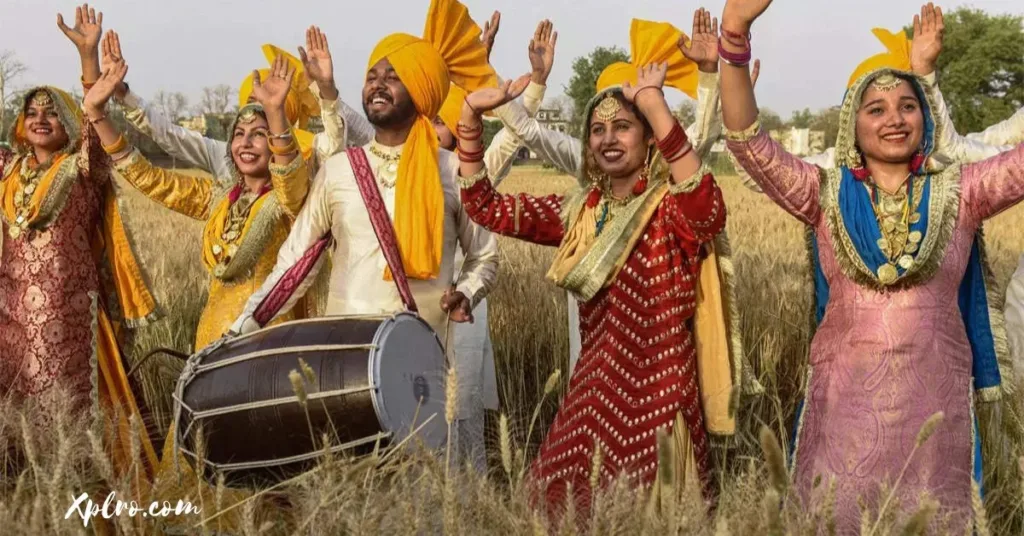
Baisakhi is celebrated in Punjab to mark the harvest season and the creation of the Khalsa in Sikhism. It is a time for thanks and celebrations, with traditional Bhangra and Gidda dances performed in the fields. The festival is also celebrated with fairs and religious ceremonies at the Golden Temple in Amritsar.
Cultural Festivals in India Highlights:
- Bhangra and Gidda performances.
- Community fairs with music, games, and festive foods.
- Sikh devotees visiting Golden Temple for religious services.
Tips: Amritsar’s Golden Temple offers a profound spiritual experience during Baisakhi.
Conclusion, Cultural Festivals in India
India’s cultural festivals are vibrant journeys into the country’s soul. Each celebration, from Diwali’s dazzling lights to Holi’s colorful chaos, reflects a deep connection to history, spirituality, and tradition. Travelers seeking an immersive experience can witness the reverence of Eid, the electrifying dances of Navratri, and countless others – all showcasing India’s unique blend of diversity and unity. Whether you’re a history buff, an adventurer, or simply a cultural enthusiast, experiencing these 10 festivals firsthand is an unforgettable way to explore India’s rich heritage. Pack your bags, mark the dates on your calendar, and dive into the incredible celebration of life that awaits you at India’s cultural festivals. Plan your exploration with Xplro.com and discover the magic of India’s vibrant soul.
FAQs
1. What are some of the most celebrated cultural festivals in India?
- India is renowned for its diverse and vibrant cultural festivals. Some of the most celebrated include Diwali, Holi, Durga Puja, Eid, Ganesh Chaturthi, Navratri, Onam, Pongal, Baisakhi, Pushkar Camel Fair, and Mysore Dasara.
2. When is the ideal time to visit India to experience its cultural festivals?
- To experience the rich tapestry of cultural festivals in India, plan your visit during key festival seasons. October-November is perfect for Diwali, September-October for Durga Puja, March for Holi, and August-September for Onam.
3. Which festival is known as the “Festival of Lights” in India?
- Diwali, often referred to as the “Festival of Lights,” is celebrated nationwide in October-November. This festival symbolizes the triumph of light over darkness and good over evil and this is Cultural Festivals in India.
4. What is the significance of Holi, also known as the Festival of Colors?
- Holi, celebrated in March, represents the arrival of spring and the victory of good over evil. The festival is marked by the playful throwing of colored powders and water, alongside music, dance, and festive gatherings.
5. Are non-Hindus welcome to participate in Indian festivals like Diwali or Holi?
- Yes, Diwali and Holi are inclusive festivals, and non-Hindus are warmly welcomed to join the celebrations. These festivals are about unity, joy, and cultural exchange, making them accessible to people from all backgrounds.
6. Where can visitors experience the grandest Durga Puja celebrations?
- For the most impressive Durga Puja the Cultural Festivals in India, visit Kolkata in West Bengal. The city is renowned for its elaborate pandals (temporary structures), artistic displays, and vibrant cultural activities during this festival.
7. What does Eid-ul-Fitr signify in India?
- Eid-ul-Fitr marks the end of Ramadan, the Islamic holy month of fasting. It’s a significant festival for Muslims, celebrated with prayers, charitable giving (Zakat), and festive meals. Major cities like Delhi, Hyderabad, and Lucknow host grand celebrations which is Cultural Festivals in India for Muslims.
8. What makes the Pushkar Camel Fair unique?
- The Pushkar Camel Fair in Rajasthan, held in November, is a distinctive event combining livestock trading with cultural festivities. Highlights include camel races, beauty contests, and traditional Rajasthani performances.
9. How is Ganesh Chaturthi celebrated in Mumbai?
- In Mumbai, Ganesh Chaturthi is celebrated with great enthusiasm. Large Ganesha idols are displayed in homes and public spaces, and the festival concludes with vibrant processions and immersion ceremonies in the sea, accompanied by music and dance.
10. What traditional dances are featured during Navratri?
- During Navratri, celebrated across Gujarat and Maharashtra, traditional dances such as Garba and Dandiya are performed. These dances are integral to the celebrations, showcasing devotion to Goddess Durga through rhythmic, colorful performances.
11. How can tourists experience traditional cultural festivals in India?
- Tourists can immerse themselves in Cultural Festivals in India by attending public events and celebrations. Participate in festivals like Diwali, Holi, and Ganesh Chaturthi in major cities. Respect local customs, dress appropriately, and consider engaging a local guide to enrich your experience.






